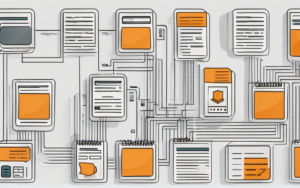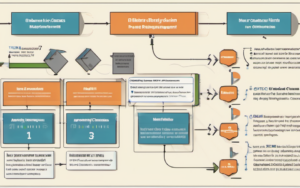The terms “bitcoin” and “blockchain” are often used interchangeably, leading to confusion. While they are undeniably linked, they represent distinct concepts. This article aims to demystify the difference between blockchain and bitcoin, clarifying their individual roles and how they interact.
Understanding the Basics
What is Bitcoin?
Bitcoin is a digital currency, a form of electronic money that operates independently of traditional financial institutions. It uses cryptography to secure transactions and control the creation of new bitcoins. Bitcoin is decentralized, meaning it’s not controlled by any single entity like a government or bank.
What is Blockchain?
Blockchain is a revolutionary technology that underpins bitcoin and many other cryptocurrencies. It’s a distributed ledger, essentially a digital record of transactions that’s shared across a network of computers. Each block in the chain contains a record of transactions, and once a block is added to the chain, it’s virtually impossible to alter or remove it.
Bitcoin: A Digital Currency
Decentralized and Secure
Bitcoin’s decentralized nature makes it resistant to censorship and manipulation. Transactions are verified by a network of computers, known as miners, who solve complex mathematical problems. This process, known as mining, ensures the security and integrity of the bitcoin network.
Transactions and Mining
Bitcoin transactions are recorded on the blockchain and broadcast to the network for verification. Miners compete to add new blocks to the chain by solving complex puzzles. The first miner to solve the puzzle receives a reward in bitcoin. This process ensures that transactions are secure and that new bitcoins are created at a controlled rate.
Volatility and Investment
Bitcoin has gained significant popularity as an investment asset, but it’s known for its volatility. Its price can fluctuate wildly due to factors like market sentiment, regulations, and technological advancements. It’s crucial to understand the risks involved before investing in bitcoin.
Blockchain: The Underlying Technology
A Distributed Ledger
Blockchain is a distributed ledger that keeps track of transactions across a network of computers. This distributed nature makes it highly secure, as any attempt to tamper with the data would require compromising a significant portion of the network.
Transparency and Immutability
The public nature of blockchain makes it transparent. Anyone can view the transactions on the ledger, but the data is encrypted to protect privacy. Once a block is added to the chain, it’s virtually immutable, meaning it cannot be altered or deleted.
Applications Beyond Cryptocurrency
Blockchain technology has a wide range of potential applications beyond cryptocurrency. It can be used for secure data storage, supply chain management, voting systems, and more. Its immutability, transparency, and decentralization make it a valuable tool for various industries.
The Relationship Between Bitcoin and Blockchain
Bitcoin as a Blockchain Application
Bitcoin is one of the first and most prominent applications of blockchain technology. It utilizes the blockchain to record and verify transactions, ensuring their security and immutability.
Other Cryptocurrencies and Blockchain
Many other cryptocurrencies have emerged since bitcoin, each with its unique features and applications. However, most cryptocurrencies use blockchain technology as their underlying infrastructure, demonstrating the versatility and adaptability of this technology.
Conclusion: A Clear Distinction
Bitcoin is a specific cryptocurrency that leverages blockchain technology. Blockchain, on the other hand, is a broader and powerful technology with numerous applications beyond cryptocurrency. Understanding this distinction is crucial for navigating the world of digital currencies and exploring the potential of blockchain.
By recognizing the distinct roles of bitcoin and blockchain, individuals can gain a better understanding of the technology revolutionizing finance and other industries. It’s essential to be informed about the intricacies of these technologies and their potential implications for the future.




